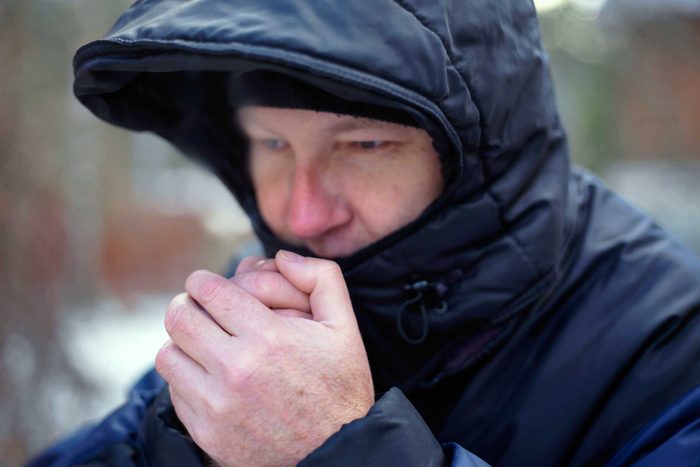
Why your hands and feet get cold
Don’t worry if you’re always rubbing your hands together for warmth or noticing that your feet are colder than the rest of your body. “The reason our hands and feet get cold in the winter is because our body prioritizes keeping our vital organs like our heart and lungs warm,” which leads to a reduction of blood flow to the extremities, says Alyssa Tucci, RDN, nutrition manager at Virtual Health Partners in New York City.
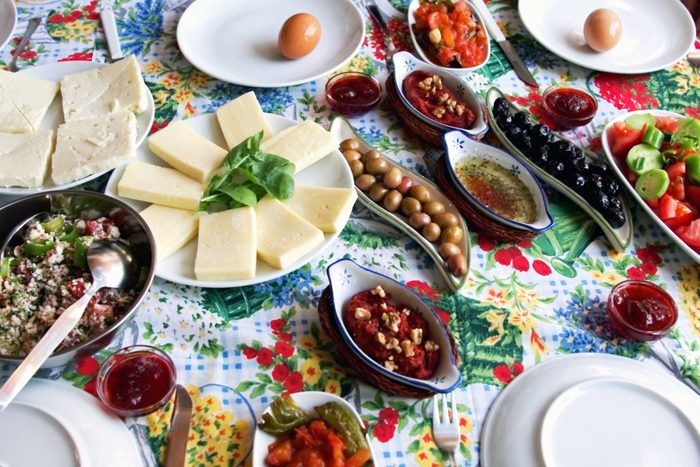
Eat heart-healthy foods
One way to warm up those extremities is to boost circulation, and eating for heart health—that holds the key. “Try to incorporate heart-healthy foods like fatty fish, nuts, olive oil, and fruits and veggies into your diet,” Tucci suggests. These foods work wonders for your circulation, which is essential for adequate blood flow and temperature regulation. Circulation-boosting foods include salmon, bananas, dark chocolate, and Brussels sprouts. Check out this full list of circulation-enhancing foods. Keep in mind, you’ll get ample portions of all those delicious foods as part of the Mediterranean diet.
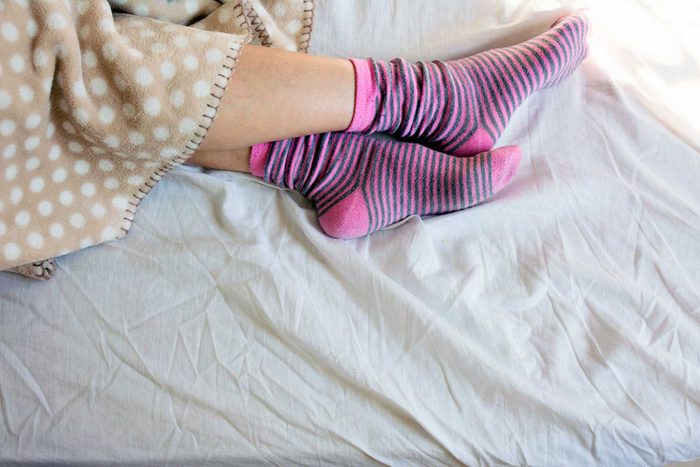
Sleep with socks
While heading to bed with socks on your feet may not heat things up in the romance department, they can help heat you up. Even the healthiest person may need some assistance on a cold winter night, and Tucci says that socks can do the trick. Need a pair you can wear every night? Ryan Anderson, a gearhead for Backcountry suggests the Smartwool PhD Outdoor Medium Crew Sock. Find out more reasons you should wear socks to bed. If your feet need a little extra pampering, homemade foot scrubs are the perfect solution.
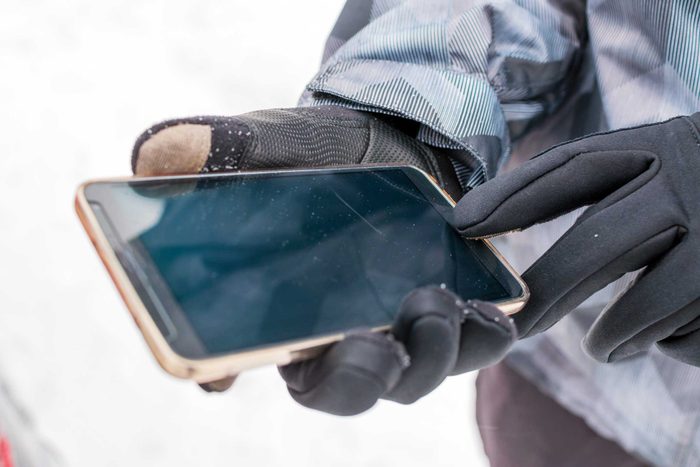
Wear the right kinds of gloves
Resist the temptation to scoop up those inexpensive dollar store gloves—or a fashionable pair that puts form before function—and opt for a product that’s truly going to keep your hands warm. Anderson suggests the Black Diamond Heavyweight Wooltech Glove. “Liners are great for everyday use because they are never too bulky and still give you some flexibility,” he says. “These are warm and the wool really helps with temperature regulating, and the leather palm makes sure you can still grip the steering wheel.” Check out what happens to your body when it’s freezing.
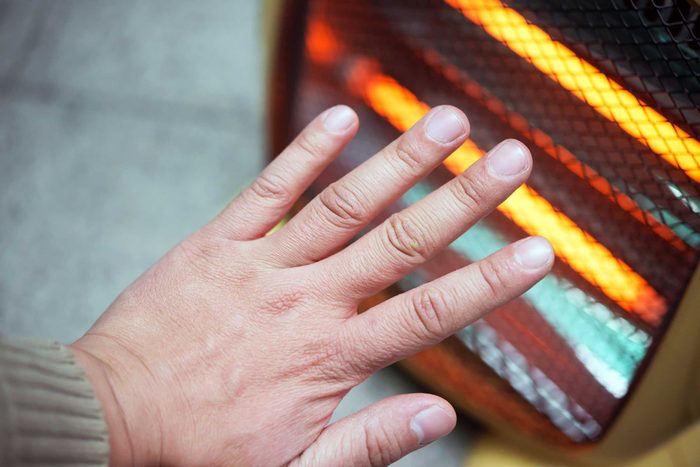
Give warming gadgets a go
Indoors, you could crank up a space heater or sit in front of a roaring fire. But on the go, tech gadgets can be very effective at keeping you warm. The go-to choice for Backcountry’s Anderson is the Seirus Heat Touch Inferno glove, complete with rechargeable batteries. For toastier toes, try Lenz 4.0 Heat Socks and rcB 1200 Lithium packs, which come with USB-charged lithium batteries. Here’s how to keep your home warm while saving on heating costs.
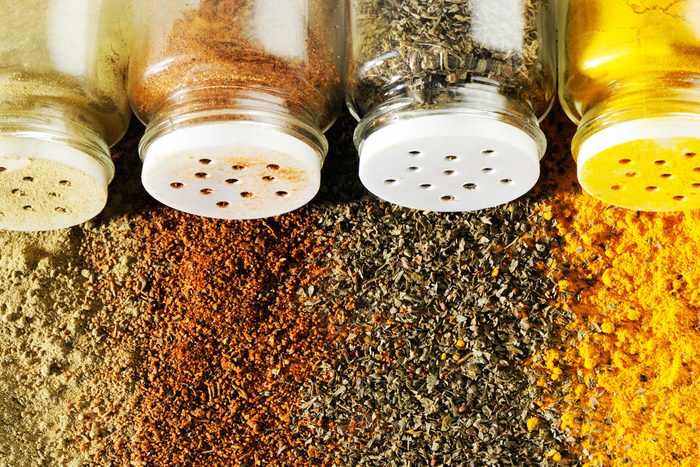
Spice things up
Add some oomph to your winter drinks and meals while increasing your warmth at the same time. Certain spices are known for their ability to increase body temperature. Check out this list of foods that boost your body heat, including ginger and green tea.
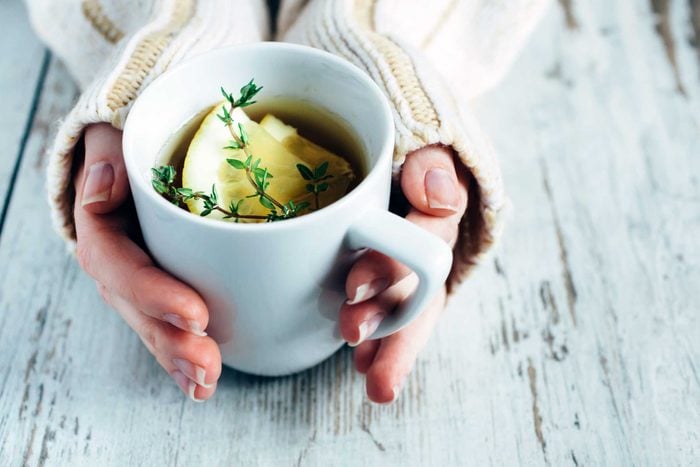
Sip on hot stuff
During the day, Tucci says it can’t hurt to sip on warm liquids like tea because it can help provide lingering surges in body temperature and more evenly distribute heat. Simply holding a warm mug can help keep fingers from getting cold, especially when you’re outdoors, like for a sports event.
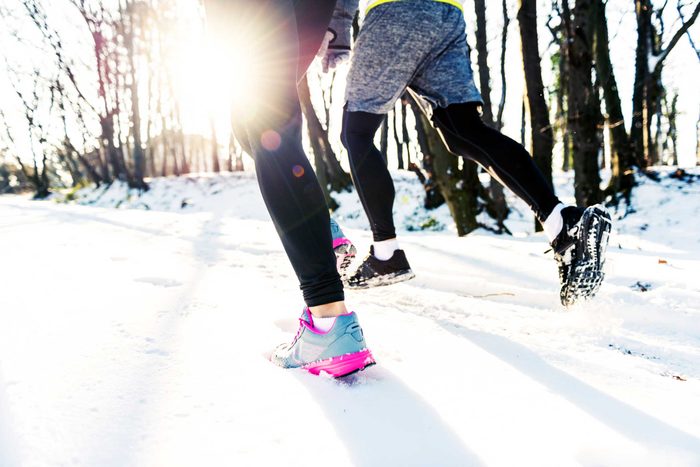
Exercise
You know how you enter the gym feeling chilly in your tank top, and then leave sweating bullets? Tucci explains that exercise—whether it involves hitting the gym or just getting some basic movement in during the day—gets blood flowing, which in turn boosts body temperature. Exercise is also a win for keeping winter weight gain at bay.
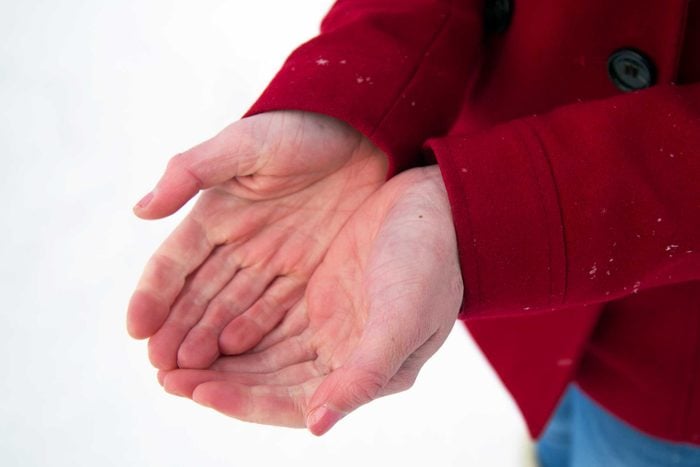
When it’s more serious
If these warm-up tips have left you (still) cold, you may have Raynaud’s disease—an exaggerated cold response that affects about five percent of the U.S. population, according to the National Heart, Lung, and Blood Institute. This condition affects the arteries, causing fingers or toes to turn white and possibly then blue as vessels constrict. You might also experience throbbing, tingling, or a burning sensation. Usually, lifestyle changes and just being cognizant of the condition can help you control it, but in some cases, you can take medications or even have surgery to fix the problem.
“Any patients who have Raynaud’s and associated skin changes, including tightening or thickening of the skin, nail changes, or cracks and sores that don’t heal, should get checked out,” says Natalie Evans, MD, vascular specialist at the Cleveland Clinic. Cold extremities can also be a sign of more serious health problems such as lupus, scleroderma, or peripheral artery disease. They may also signal a thyroid problem; have your thyroid checked if you also have hair loss, fatigue, and/or constipation. If you notice changes such as brittle or coarse hair, fatigue, and swollen extremities that occur in conjunction with your cold hand and/or feet, contact your doctor to assess your health.

